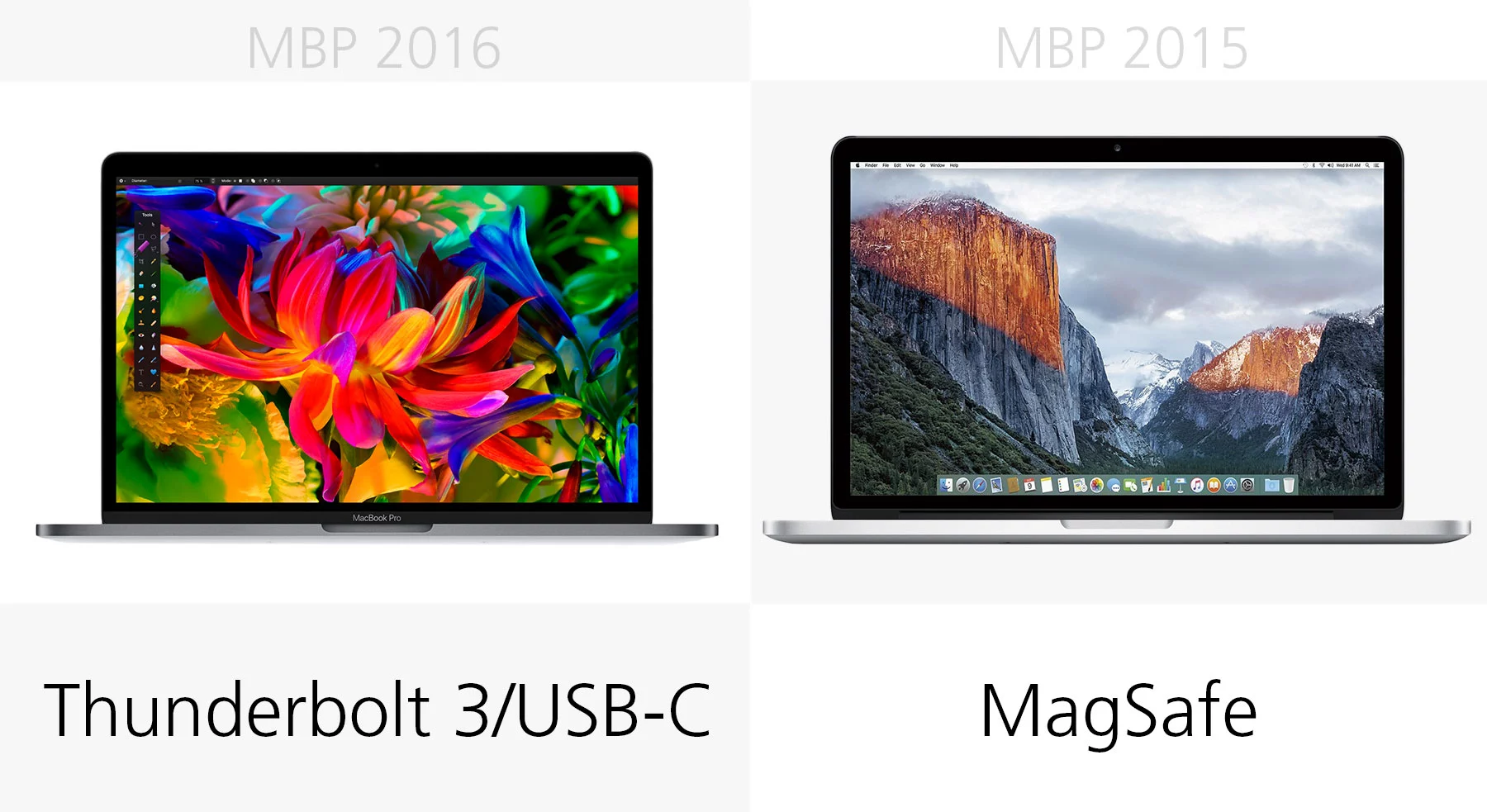Apple thinks it's reinvented the laptop again, with the new 2016 MacBook Pro. Is a strip of touchscreen ripped straight from the world of smartphones, along with a few more standard upgrades, enough to justify the notebook's staggering sticker price? Let's tackle that topic, as we line up the 13-inch version of the new 2016 MacBook Pro with its 2015 counterpart.
Size

The new 13-inch MacBook Pro (note that we excluded the 15-inch options from this comparison) gets a more compact footprint, sticking with the same screen size but shrinking down to 3 percent shorter, 3 percent narrower and 17 percent thinner.
Weight

The 2016 model is also 13 percent lighter than its predecessor, perhaps just a little friendlier on your back as you lug it around.
Build
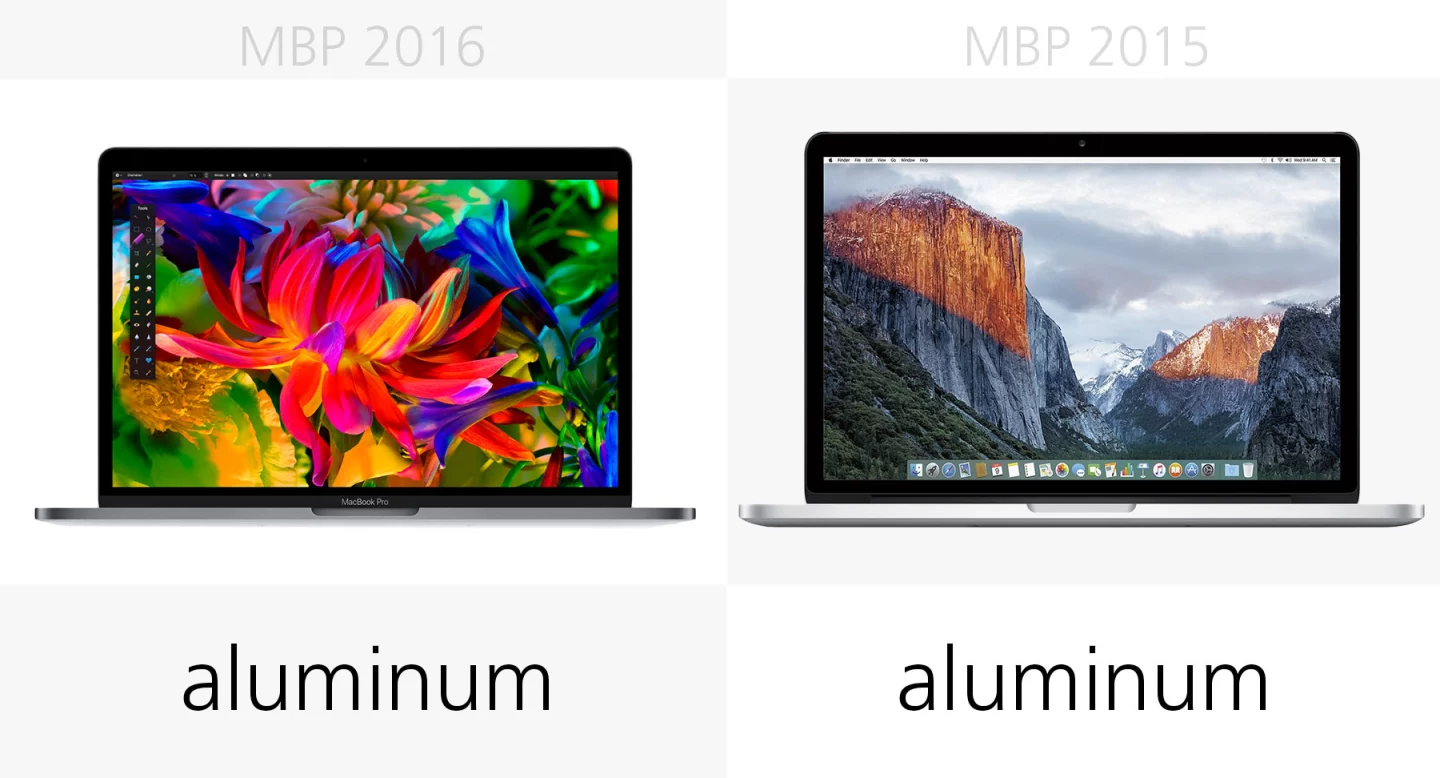
All-metal, aluminum, unibody designs are now standard not just among Apple devices, but in all of mobile. These two don't color outside of those lines.
Colors
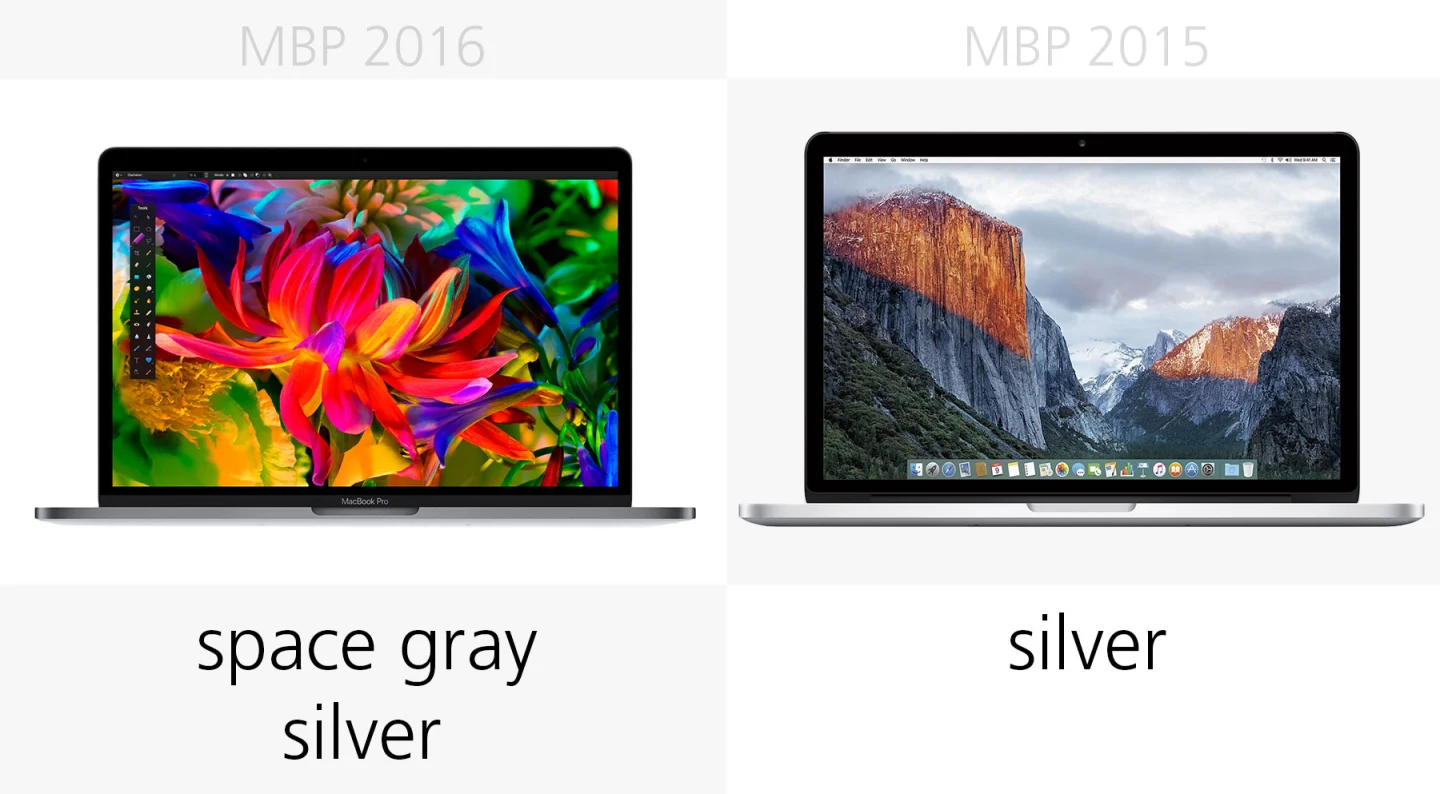
Apple added a space gray option to the new model, right after that color was axed from the iPhone lineup.
Display size

The "13-inch" MacBook Pro still refers, precisely, to a 13.3-inch display, with 16:10 aspect ratio.
Display resolution
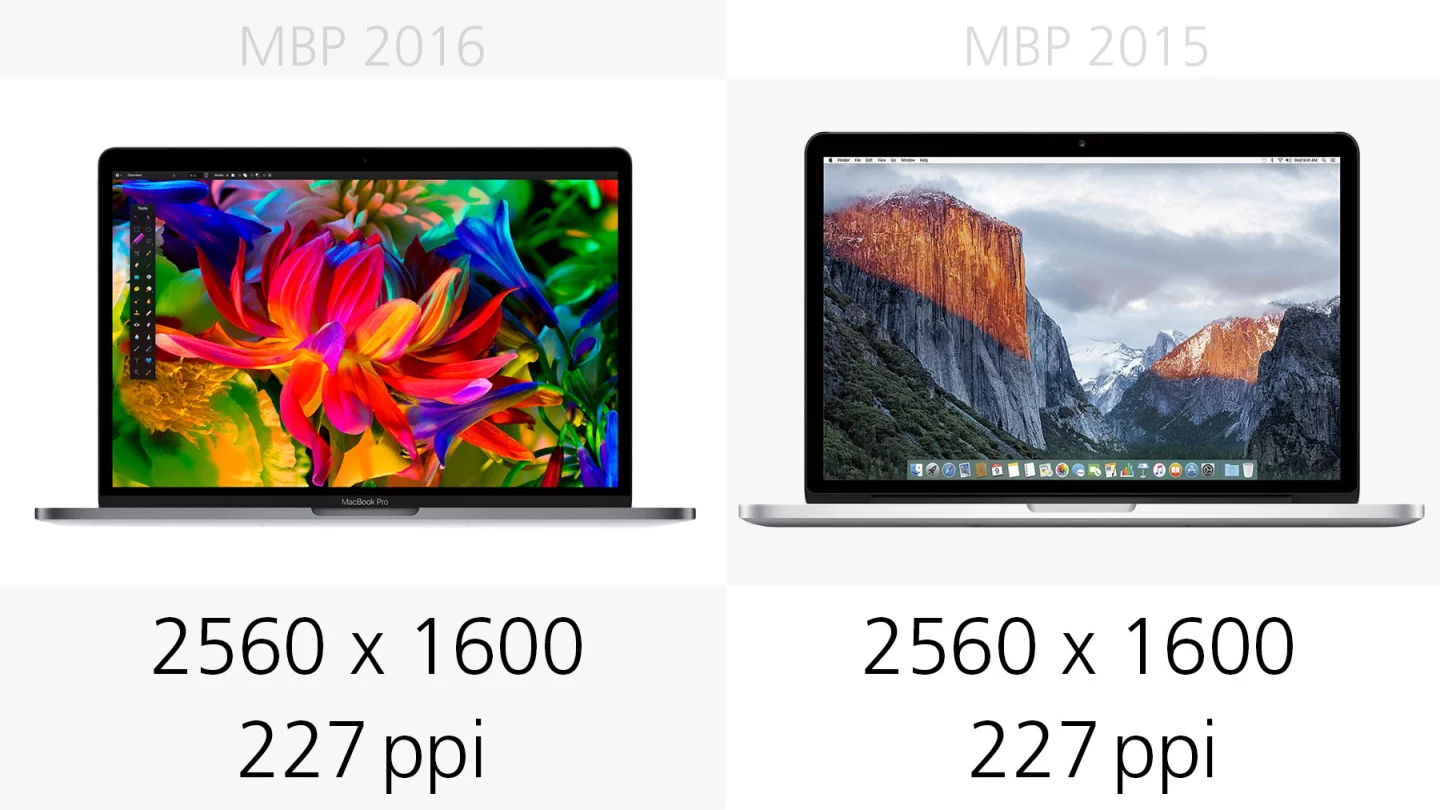
Apple dropped the "with Retina Display" branding this year, not because it went anywhere, but presumably because a high-quality screen in this lineup is, in 2016, a given. It stands pat with the same resolution and PPI.
Apple says the new screen moves forward in other ways, though, like a 25 percent wider color range and 67 percent higher contrast.
Trackpad

Apple made the new trackpad 46 percent bigger this time around. It's still made of glass, and sticks with Force Touch tech (doesn't move, but feels like it does), similar to 3D Touch on iPhones.
Touch Bar

The supposed killer feature of the new MacBook Pro, and certainly the one you'll hear the most about, is the Touch Bar: a multitouch strip sitting above the keyboard in place of the old Fn keys. Developers can employ the Touch Bar's services to show toolbars, options, emoji, shortcuts and other things that would usually sit on the main screen or require a keyboard shortcut. It doesn't really appear to add anything, so much as it moves things into a more modern-feeling place.
There's also a cheaper (relatively speaking) version of the 2016 MacBook Pro that skips the Touch Bar and keeps the old F1-12 row of keys.
Fingerprint sensor

The Touch Bar also includes Apple's Touch ID fingerprint sensor, a first on a Mac. Being without the Touch Bar, the entry-level 2016 MacBook Pro doesn't have this either.
Processor

Intel's Kaby Lake (7th-gen) processors didn't make the cut in time for the new MacBook Pro, so Apple stuck with 6th-gen/Skylake, still a generation newer than the Broadwell chips in the 2015 model.
Note that Apple also offers made-to-order configurations, including faster clock speeds on the Core i5 as well as an i7 option, but you can't walk into a store and buy those.
RAM

This 8 GB of RAM is standard for both generations of MBP, but there are also made-to-order configs that jump up to 16 GB.
Storage

Both models have speedy solid-state drives (SSDs), but Apple axed the 128 GB option this time around. Maybe that can provide some consolation as you weep over the US$200-500 higher starting price (read on).
Ports

Apple loves Thunderbolt 3/USB-C, dropping all other ports from the 2016 model in favor of the new standard. The cheaper (non-Touch Bar) model only has two of them, while the more expensive (Touch Bar) variants jump up to four Thunderbolt/USB-C ports.
Pro/enthusiast photographers may find a bone to pick in the fact that the shiny, new, more-expensive machine now requires an adapter for SD card transfers.
Charging port

The new model drops the standalone charging port, using one of the Thunderbolt 3/USB-C ports for juicing up. On the Touch Bar models, this actually adds some versatility, as you can plug a charger into either side of the notebook.
You do, however, lose the fun snap-into-place scheme from the now-retired MagSafe in the 2015 model.
Headphone jack

Apple killed the 3.5-mm headphone jack in the latest iPhones, but it lived to fight another day in the 2016 MacBook Pro.
Battery
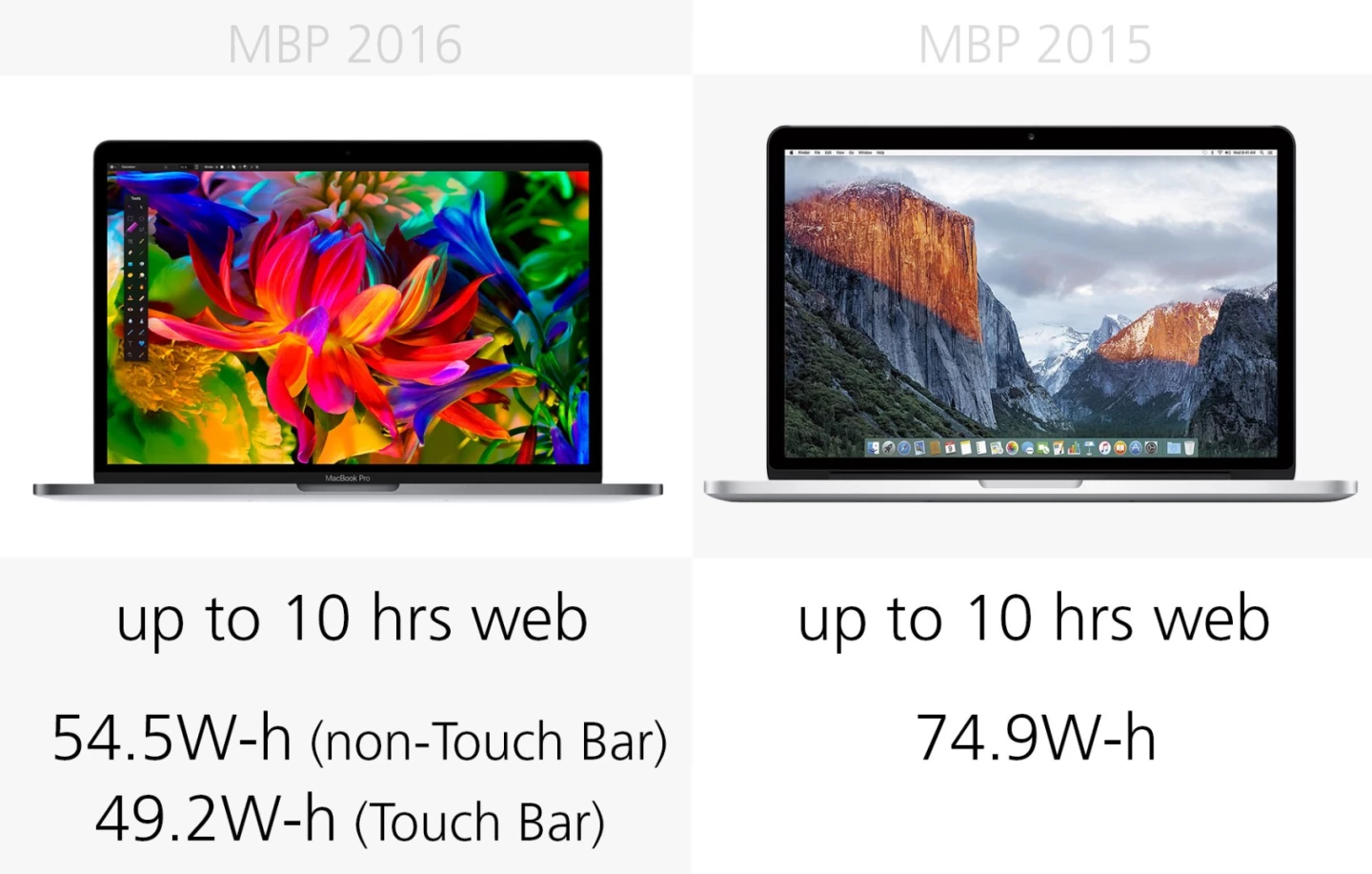
We're seeing the same "up to 10 hours web browsing" estimate in this year's model, despite the smaller batteries.
Webcam

It doesn't look like anything changed here: same 720p webcam. Or "FaceTime HD Camera," in Apple-speak.
Software

Other than the extra software goodies that the Touch Bar brings to the party, you get the exact same macOS Sierra experience on both models.
Release

The non-Touch Bar version of the new MacBook Pro is already available, while the Touch Bar models are up for pre-order and start shipping in November.
Starting price

The Touch Bar had better be nothing short of revolutionary, because if you want one, you're forking over a minimum of $1,800 – a $500 hike over last year's base model. And yes, that's a jaw-dropping starting price for a 13-inch laptop. There's also that $1,500 non-Touch Bar model to help Apple more easily lure you in the door, if you aren't too worried about iPhone-ifying your laptop.
If pricing were the same or similar, the 2016 MacBook Pro would look like a no-brainer upgrade. With its sky-high cost, though, the bar is set high indeed for the Touch Bar. Anything less than "amazing" or "game-changing," and this is going to be one tough sell.
Stay tuned for our new MacBook Pro review, where we'll dive deeper into these questions. If you want a time-capsule look at the 2015 model, you can revisit our review from early last year.



